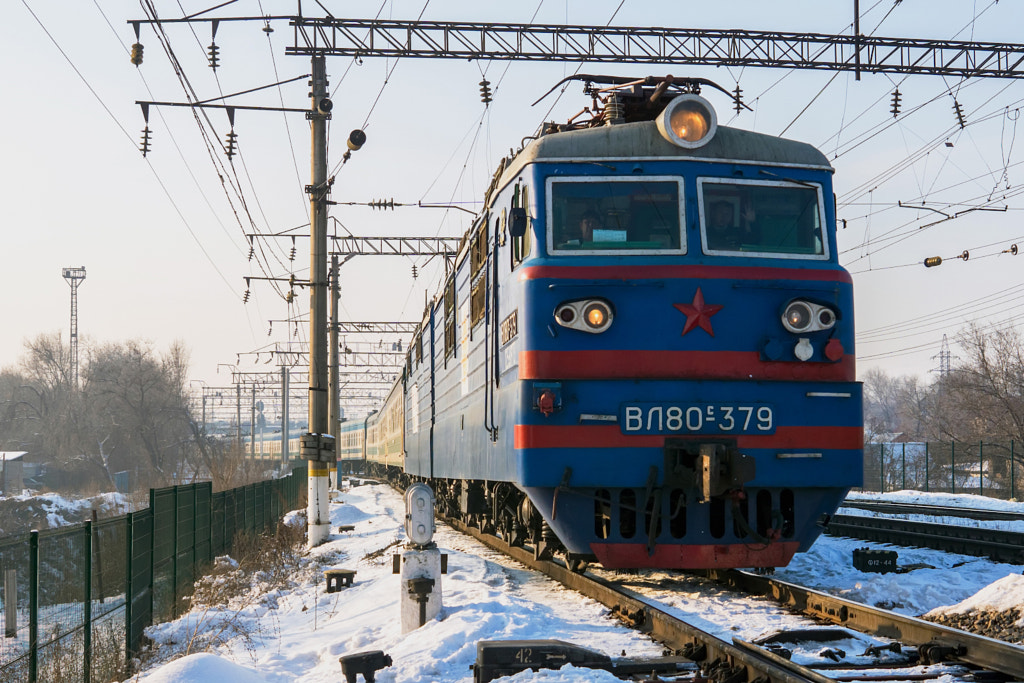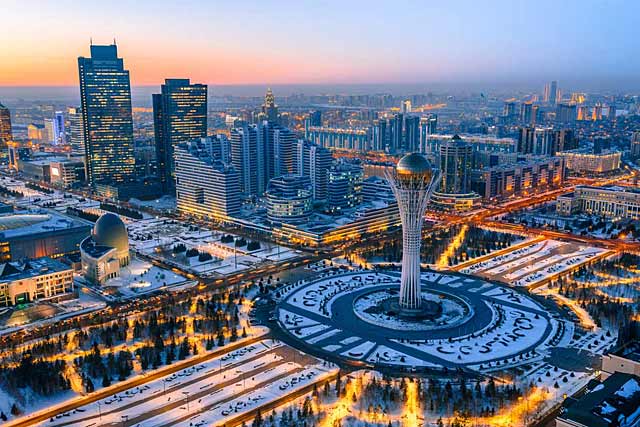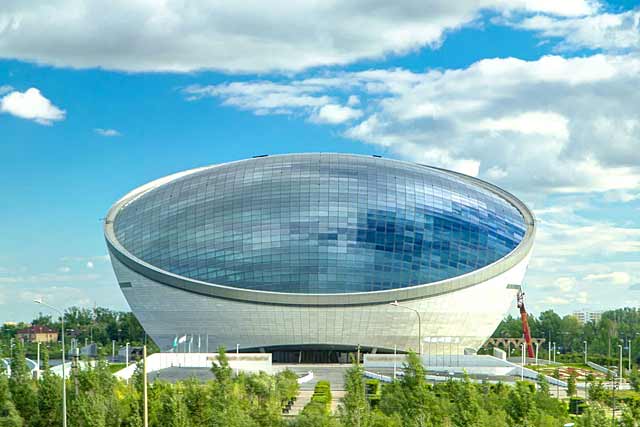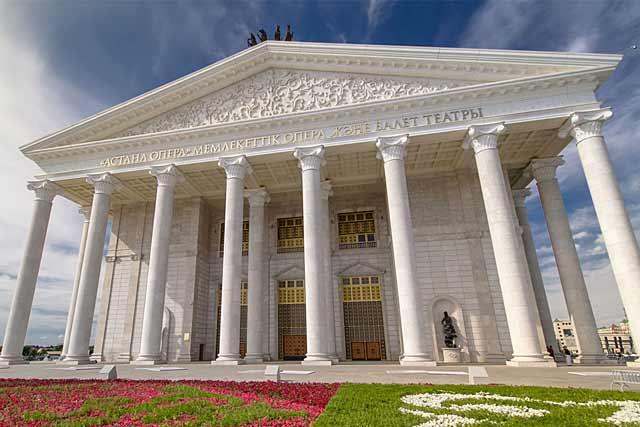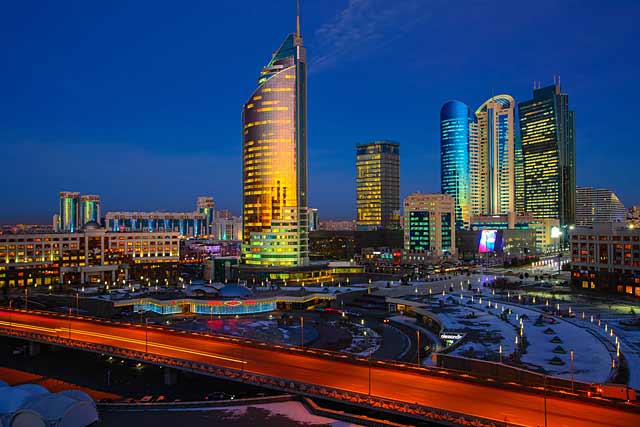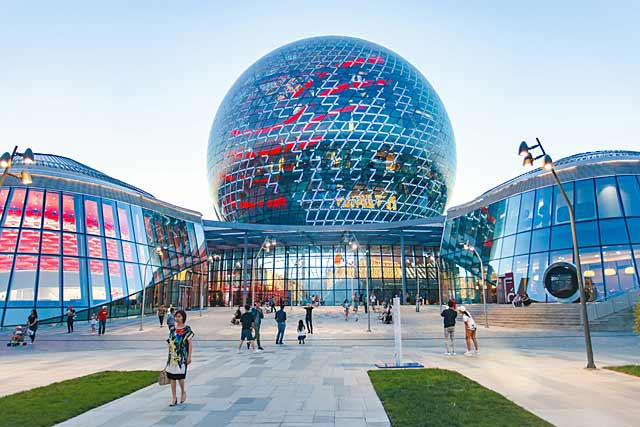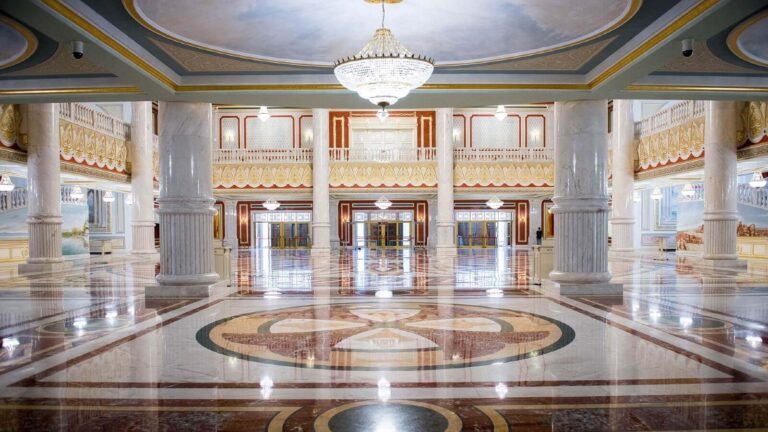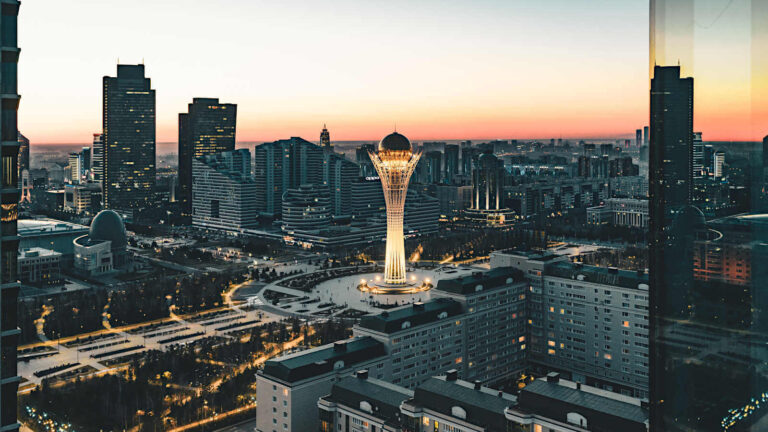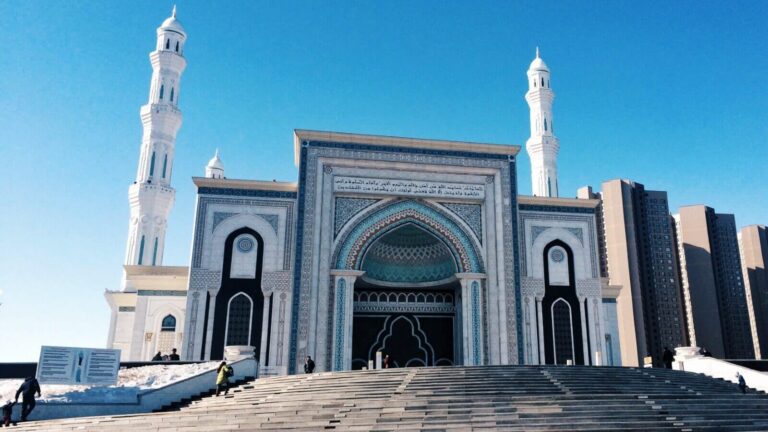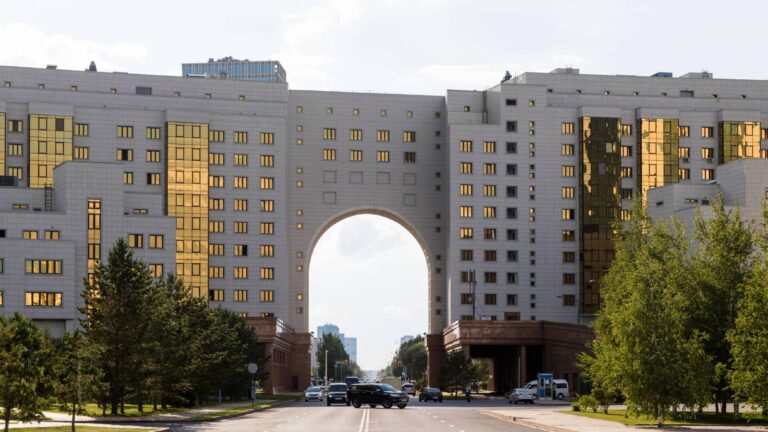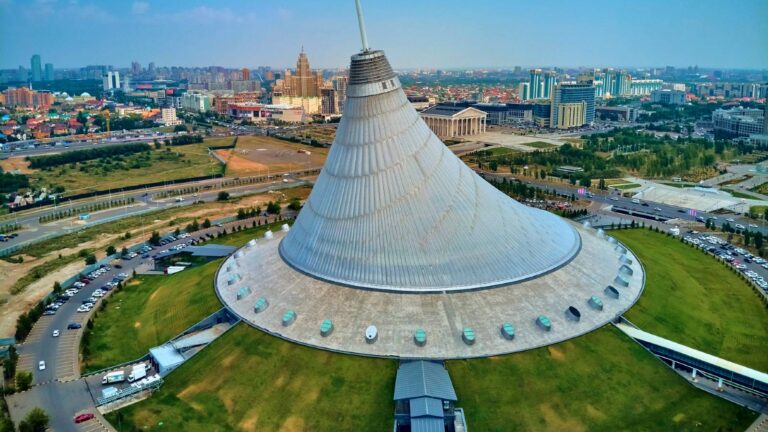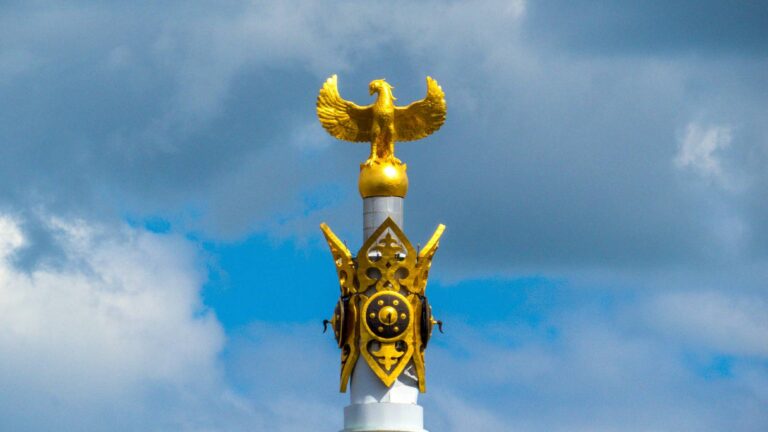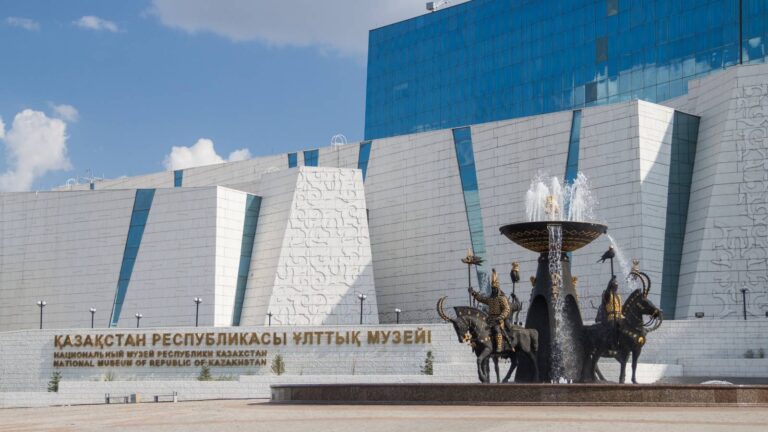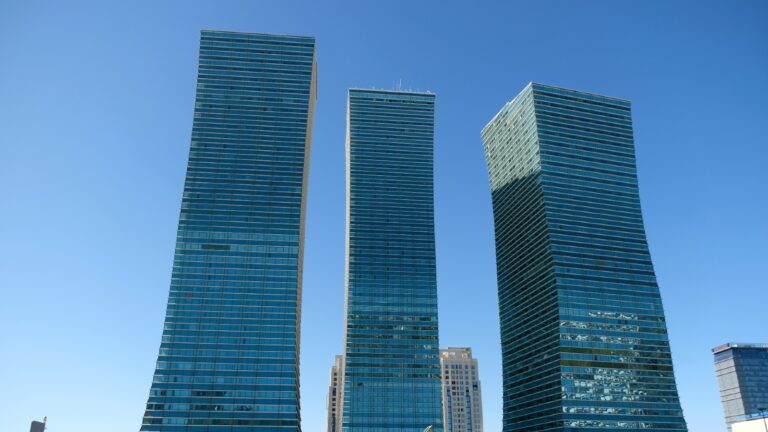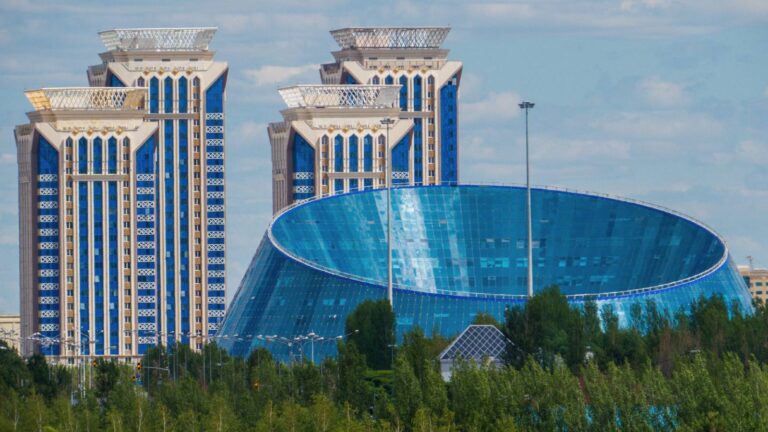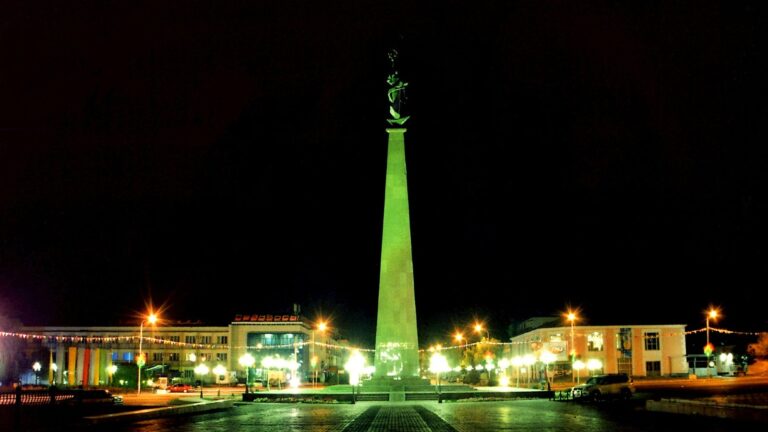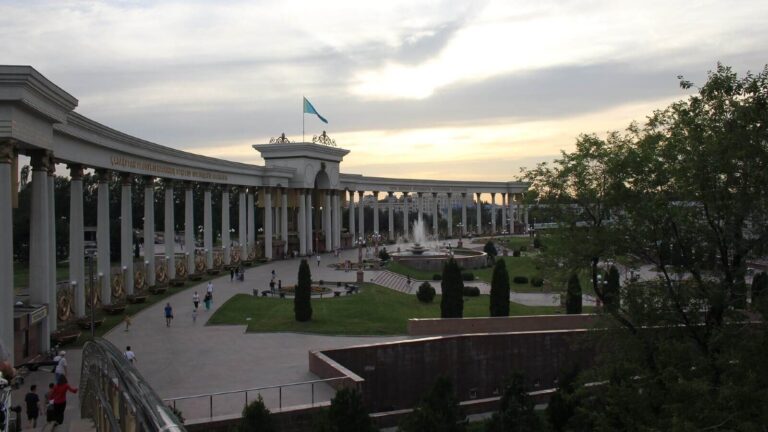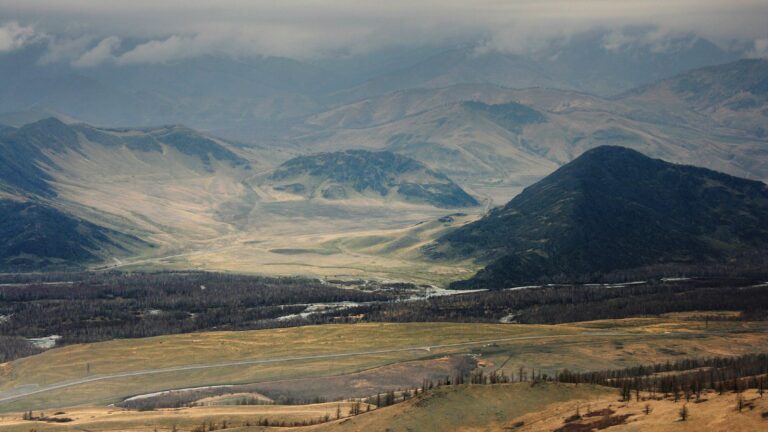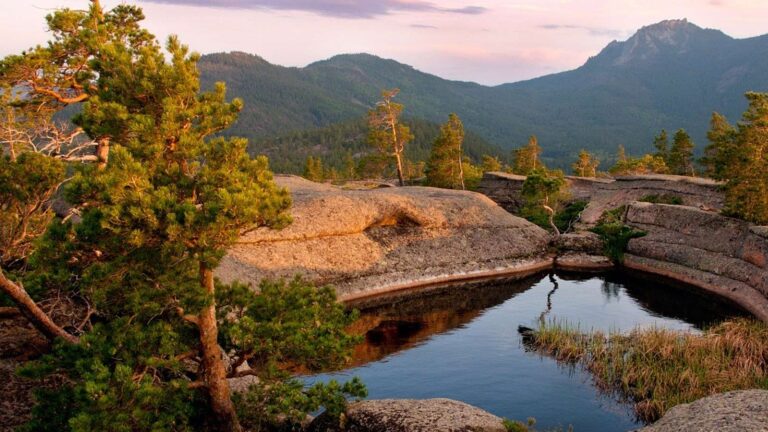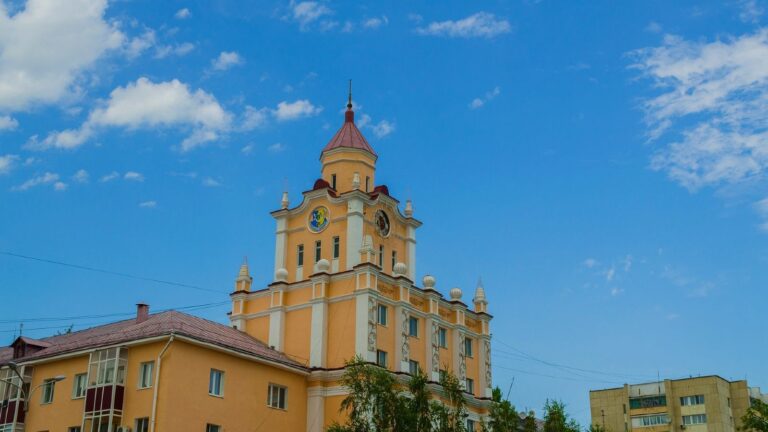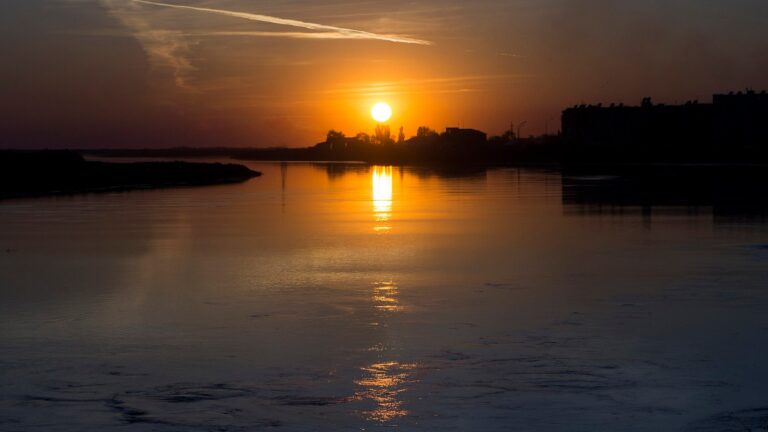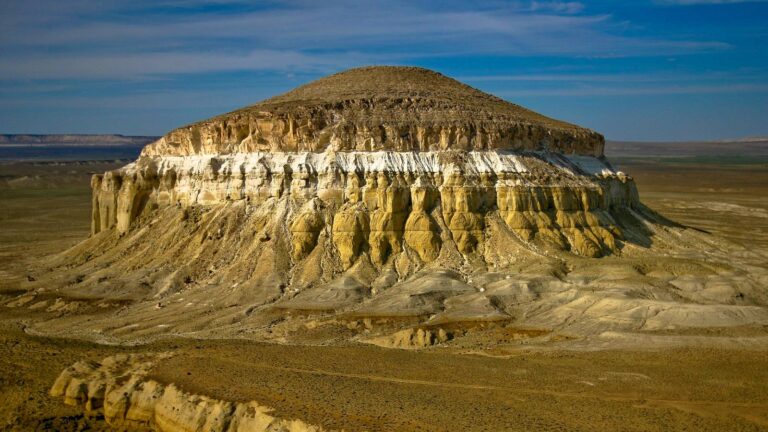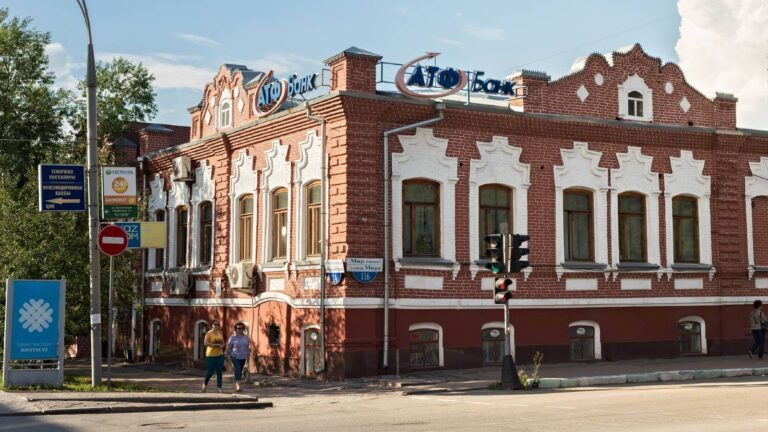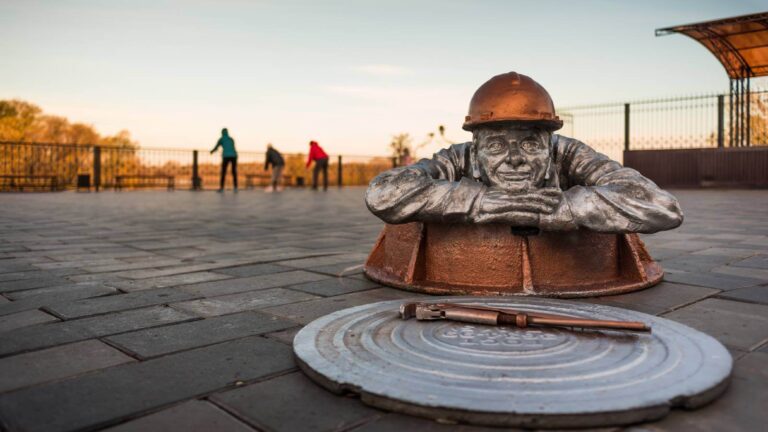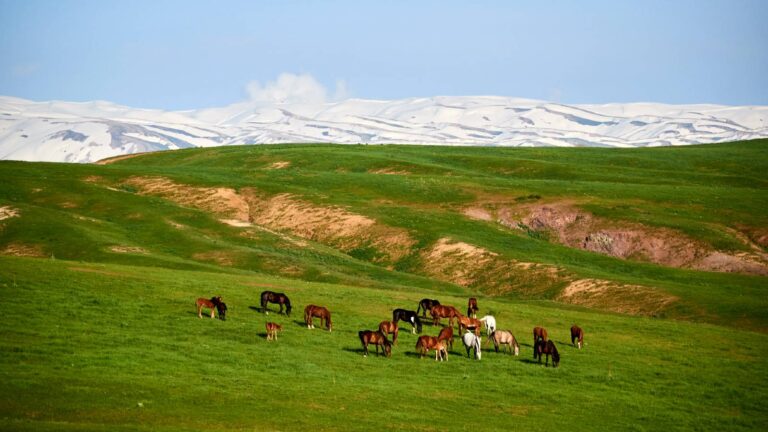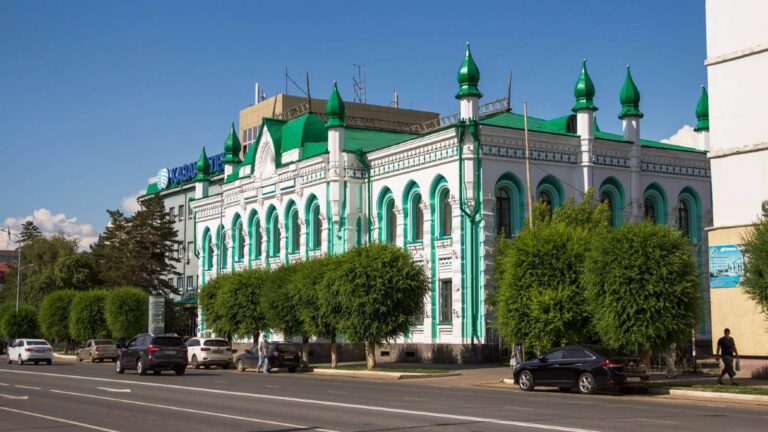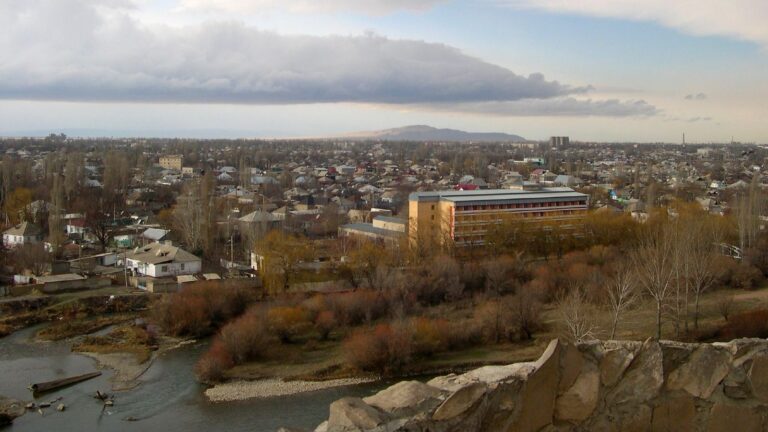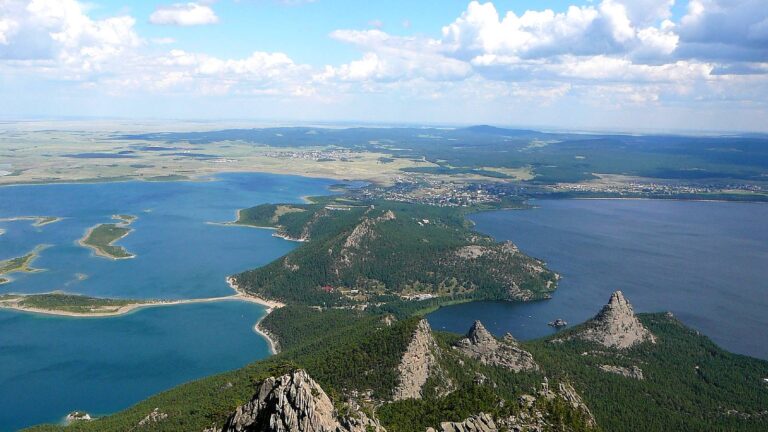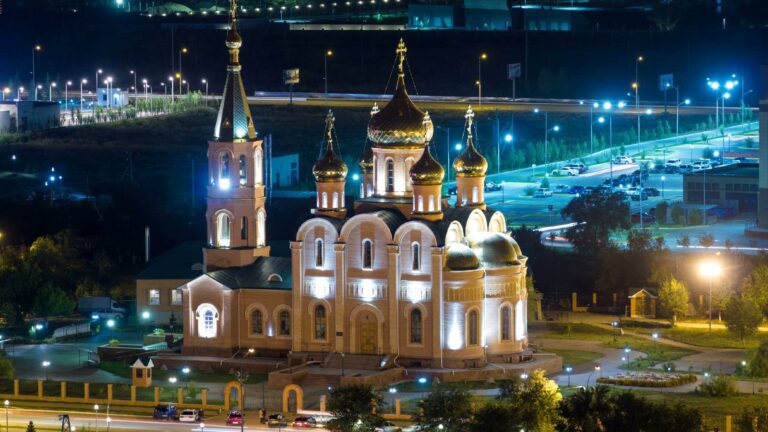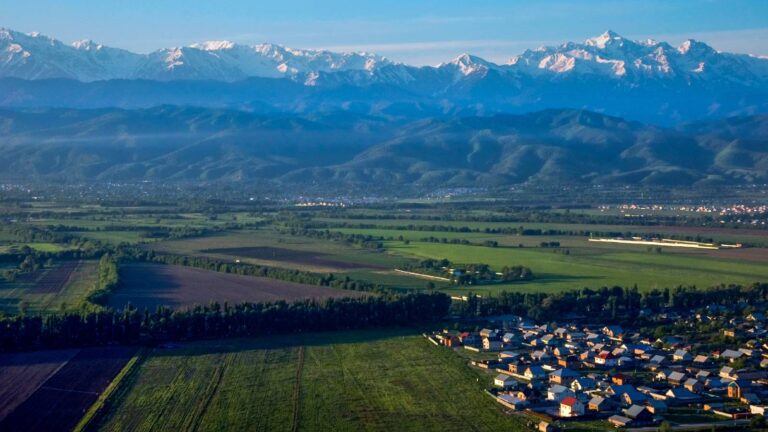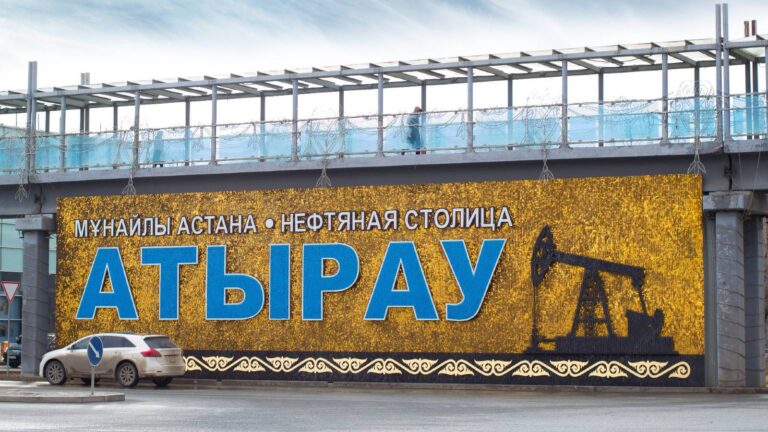By Plane
ASTANA INTERNATIONAL AIRPORT
The history of the capital’s airport dates back to 1930, when a small airfield was built on the outskirts of the town and was developed further after World War II.
From 2002 to 2005, a large-scale project was implemented to reconstruct the airport and turn it into the International Airport of the capital of the Republic of Kazakhstan. Currently, Astana International Airport is fully compliant with all International Civil Aviation Organization (ICAO) standards, and serves aircraft of all types without take-off weight limitations – Il-76, An-124, B747-400F.
According to the latest data, 19 Kazakhstani and international airlines fly to Astana airport, making direct flights to 27 directions: Moscow, Tashkent, Kiev, Minsk, Tbilisi, Bishkek, Baku, Kazan, Tomsk, Novosibirsk, Omsk, St. Petersburg, Yekaterinburg, Frankfurt, Amsterdam, Bangkok, Vienna, Abu Dhabi, Dubai, Istanbul, Beijing, Antalya, Urumqi, Sharjah, London, Seoul, Paris.
Phone: +7 (7172) 70-29-99
Site: astanaairport.kz
By Train
RAILWAY STATION OF THE CITY OF ASTANA
Trains arrive at the international station of the capital from all major cities of Kazakhstan and the largest cities of the neighboring countries. From Astana by rail you can get to Almaty, Shymkent, Aktobe, Karaganda, Moscow, Tashkent, Kiev, Yekaterinburg, Novosibirsk, Urumqi, etc. A detailed timetable for passenger trains is available on the website.
Tickets can purchased at the ticket offices of the station, ticket sales points around the city, as well as through the special online service of the Kazakhstan Temir Zholy company.
In addition to regular trains, Spanish high-speed Talgo trains run from Astana, which save up to 50% of travel time. At the moment, high-speed trains run in three directions: Almaty, Aktobe and Petropavlovsk. In the near future, it is planned to open new high-speed routes to Kyzylorda and Ust-Kamenogorsk.
Address: 1, Goethe street
Information: 105
Phone: +7 (7172) 93-28-40
Online ticket purchase: epay.railways.kz
By Bus
SAPARZHAY BUS STATION
The bus station began its work 8 years before the transfer of the capital to the former Akmola, or then-Tselinograd, in 1989. From 2009 to 2013, its large-scale reconstruction was carried out – the facade and internal structure of the passenger hub were transformed and changed.
Along with the transformation of the building, the workflow technologies were also updated. Now the Astana bus Station is not only engaged in the sale of tickets for intercity buses, but also provides a full range of services to travelers. There are rest rooms, shops, hairdressers, exchange offices, pharmacies and newsstands. The possibilities for buying tickets have also expanded, now you can buy them via the Internet or using POS terminals.
Every day, the Astana bus station accepts passengers who have arrived from cities and settlements of Kazakhstan and neighboring countries. Buses run to Almaty, Aktobe, Karaganda, Pavlodar, Semey, Shymkent, Omsk, Bishkek, Barnaul, Yekaterinburg, etc. A detailed schedule is available on the website of the bus station
Passengers wishing to use passenger transportation services can purchase a ticket through the online purchase service here
Address: 5, Goethe str.
Phone: +7 (7172) 38-11-35
Website and online ticket purchase: saparzhai.kz
If you like futuristic buildings, as if descended from movies about the distant future, wide avenues and streets, unusual entertainment – welcome to the left bank of the capital of Kazakhstan. The city of Astana is divided into two parts and is located on the left and right banks of the Ishim River. On the left bank there are such world famous sights of Astana as:
- Nur-Alem Museum of Future Energy in the form of a shiny blue sphere (Expo-2017 after-exhibition heritage).
- Khan-Shatyr, the world’s biggest tent with its own beach.
- Baiterek, the 97-meter symbol of the capital of Kazakhstan, a fabulous tree of life, to the crown of which, according to legend, the magic bird Samyruk strives.
- Nurzhol Boulevard, surrounded by futuristic architecture, leads directly to the President’s residence.
The right bank will be a real discovery for those who like the calm and cozy atmosphere of the old city. This part perceptibly contrasts with the left bank: many old buildings and sights of the 19th century seem to take you back in time. Massive buildings of a rather severe appearance allow you to imagine what the city looked like during the Soviet Union. In addition to interesting architecture, there is, of course, something to see and where to go for new experiences:
- Saken Seifullin Museum
- Konstantin-Eleninskaya church
- Matvey Kubrin trading house (now supermarket Astana)
- The house of the merchant P. G. Moiseev (Central clinical hospital for disabled people of the Second World War)
- Snow-white Khazret Sultan mosque is the largest and most majestic in Central Asia
- Palace of Peace and Reconciliation in the form of a sparkling pyramid.
- Astana Concert Hall, the building of the former Congress Hall
We also recommend art lovers to visit:
The Astana Opera and Ballet Theater with the repertoires of different genres that constantly replenished with masterpieces of world and domestic classics, original modern performances.
The sports life of the capital is interesting and rich, international tournaments and matches in various sports can be watched from the stands:
- Barys Arena sports complex, where not only ice hockey competitions are held, but concerts, forums and other events.
- Astana Arena, two-tiered structure conceived as a large amphitheater and can seat 33,000 spectators. It hosts world-class football matches, as well as other sporting and cultural events.
- Alau Ice Palace, indoor speed skating stadium of the capital.
And this is only a small part of the sights that you can see in the capital of Kazakhstan. Therefore, we recommend staying here for a few days to get to know the city better.
The endless steppes of Akmola have long been the place where various civilizations and cultures met and intertwined. “Father of history” Herodotus in his writings mentioned the route through the Great Steppe (later known as the Great Silk Road), along which the caravans passed in these places. The development of handicrafts, the flourishing of trade in cities, previously traditionally occupied exclusively with animal husbandry and agriculture, was facilitated by caravan routes through the Great Steppe.
Five kilometers from modern Astana, the medieval settlement Bozok was discovered, which can rightfully be called the millennial predecessor of the Kazakhstan’s capital.
Almost two hundred years ago, in the 30s of the XIX century, in these steppes on the site of the Akmola village, the city of Akmolinsk appeared, which served as a military, commercial and economic center.
With the development of virgin lands in the 60s of the last century, the city of Akmolinsk was renamed Tselinograd. In 1992 the historical name Akmola returned to the city.
With the acquisition of the status of the capital of Kazakhstan on May 6, 1998, the city receives the name Astana, which means “Capital”. So the ancient city of skilled craftsmen, skilled traders and hardworking grain growers became the center of the state, social and cultural life of a new, democratic sovereign Kazakhstan.
On March 23, 2019, the new President of Kazakhstan, Kassym-Jomart Tokayev has signed a decree allowing the capital city of Astana to be renamed Nur-Sultan in honor of the country’s founding President Nursultan Nazarbayev. It was renamed again, back to Astana, in 2022.
Today Astana is not only a large administrative center of Kazakhstan, located at the intersection of the country’s main development networks. It is a leading city that sets the tone for the Kazakhstan innovative development. A city that acts as a locomotive of transformations in Kazakhstan of the new millennium. Tourism gem in the steppes.
The idea of creating a new capital of Kazakhstan belongs to the Head of State Nursultan Nazarbayev.
The decision to transfer the capital from Almaty to Akmola was made by the Supreme Council of the Republic of Kazakhstan on July 6, 1994. The official transfer of the capital took place on December 10, 1997. By the presidential decree of May 6, 1998, Akmola was renamed to Astana. The international presentation of the new capital took place on June 10, 1998. In 1999, by decision of UNESCO, Astana received the title of “City of Peace”. Since 2000, the main city of Kazakhstan has been a member of the International Assembly of Capitals and Large Cities.
The city houses the Akmola Regional Philharmonic Society, museums (National Museum of the Republic of Kazakhstan, Museum of History and Local Lore, Museum of Fine Arts, Museum of Saken Seifullin), theaters (National Opera and Ballet Theater named after Kulyash Baiseitova, Kazakh Music and Drama Theater named after Kalibek Kuanyshpayev, State Academic Russian Drama Theater named after Maxim Gorky), National Space Center, Nur Alem Museum of Future Energy, libraries. The cultural and educational institutions of the city include the Congress Hall, the Youth Palace and the Presidential Cultural Center.
The Baiterek monument is the main symbol of the city. On July 6, 2000 the Tree of Life fountain was built in the capital. The structure itself is of an exclusively symbolic nature, conveying the eternal cycle of life. The opening of the square was timed to coincide with the 60th anniversary of the President of Kazakhstan. On July 6, 2018, a monument to the Hero of the Soviet Union Manshuk Mametova will be erected in the capital for the 20th anniversary of Astana.
Astana hosts many cultural events. From 24 to 30 October 2006, Astana hosted the IV Youth Delphic Games of the CIS member states. The preparation and holding of the event was carried out jointly by the National Delphic Committee of Kazakhstan and the International Delphic Committee. From 24 to 29 September 2012, Astana hosted the Seventh Open Youth Delphic Games of the member states of the Commonwealth of Independent States. Over a thousand art workers from 16 countries took part in the Games: Austria, Azerbaijan, Armenia, Afghanistan, Belarus, Bulgaria, Georgia, Italy, Kazakhstan, Kyrgyzstan, Moldova, Russia, Romania, Tajikistan, Turkey, and Ukraine.
The city also hosts several music (Astana-Arkau, Zhas kanat, The Spirit of Tengri) and film festivals.
Located on the banks of the Ishim River, Astana city is divided into two parts – the right and left banks. The hydrographic network of the city is represented not only by the only river Ishim, but also by its insignificant right tributaries – Sarybulak and Akbulak. There are numerous fresh and salt lakes within a radius of 25-30 km around the city.
The climate of the city is sharply continental. Summers are hot and dry, winters are frosty and long. The average annual temperature is 3.1°C. There is 300 mm of precipitation per year. With an average summer temperature of about 20°C and an average winter temperature of about -15°C, it is not uncommon for the heat to exceed 40°C in summer, and frosts down to -50°C in winter due to the fact that Siberian frosts reach the city in winter and hot air masses come from Central Asia in summer. Due to the not very human-friendly location in the middle of the steppe prone to aridity and strong winds, a large-scale project is being carried out to arrange a green belt around the city – a strip with trees and other large green spaces.
The high growth rates of the city’s economy attract numerous investors. The share of Astana in the republican volume of attracted investments is 10%, the share of the city’s GRP in the economy of the republic is 10.2%. The capital’s economy is based on industrial production, transport, communications, trade and construction.
Industrial production is mainly concentrated in the production of building materials, food / beverage and mechanical engineering. Astana occupies a leading position in Kazakhstan in the production of construction metal products, ready-to-use concrete, and construction products made of concrete.
Among the largest enterprises in the city, one can single out such objects as Tselinograd car repair plant, Tsesna-Astyk consortium, Tulpar-Talgo LLP Passenger Car Assembly Plant, Eurocopter Kazakhstan Engineering LLP Helicopter Assembly Plant and others. The city has become one of the largest business centers in Kazakhstan.
The entrepreneurial culture is developing dynamically – more than 128 thousand small and medium-sized businesses operate in Astana. The average monthly nominal wage of residents of the capital is about 154 thousand tenge.
The capital is the leader in terms of construction volumes in the country. After Astana acquired the capital status, 10 million square meters of housing were built in the city. Hundreds of domestic and foreign construction companies took part in the construction of Astana.

